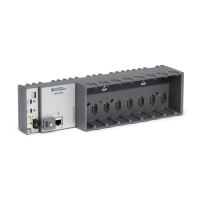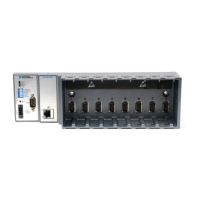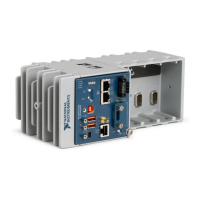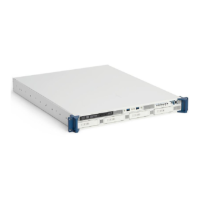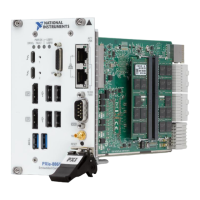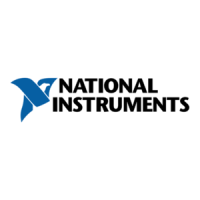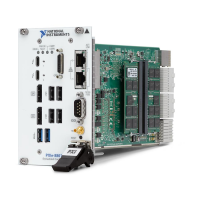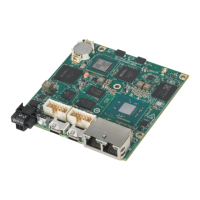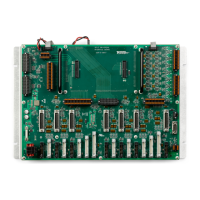LabVIEW
FPGA
Enables you to use C Series modules from LabVIEW FPGA VIs.
C Series modules appear directly under the FPGA Target item in the
MAX Project Explorer window and I/O channels appear as FPGA I/O
items under the FPGA Target. To access the I/O channels, you either
configure FPGA I/O Nodes in a LabVIEW FPGA VI or drag and drop
the I/O channels from the Project Explorer window to a LabVIEW
FPGA VI block diagram.
Use this mode to add more flexibility, customization, timing, and
synchronization to your applications. To use the CompactRIO system
in FPGA mode, you must either have the LabVIEW FPGA Module
installed on the host computer, or have access to a compiled bitfile
that you can download to the FPGA. In either case, you use the Open
FPGA VI Reference function in a LabVIEW Real-Time VI to access
the FPGA VI or bitfile.
Use the following table to assist you in choosing a supported programming mode for your
task.
Table 18. Supported Programming Modes for Popular Tasks
Task Real-Time Real-Time Scan (IO
Variables)
LabVIEW FPGA
Control rates up to 1 kHz ■ ■
Control rates between 1 kHz and
5 kHz (application dependent)
■ ■
Control rates over 5 kHz ■
High-speed waveform acquisition ■ ■
Note Some C Series modules can only be used in certain programming modes. For
module-specific software support information, visit ni.com/info and enter the Info
Code swsupport.
To learn more about using the cRIO-904x in Real-Time mode, refer to the following sections:
• Analog Input with NI-DAQmx
• Analog Output with NI-DAQmx
• Digital Input/Output with NI-DAQmx
• PFI with NI-DAQmx
• Counters with NI-DAQmx
Analog Input with NI-DAQmx
To perform analog input measurements, install a supported analog input C Series module into
any slot on the cRIO controller and set the programming mode to Real-Time (NI-DAQmx)
mode. The measurement specifications, such as number of channels, channel configuration,
sample rate, and gain, are determined by the type of C Series module used. For more
cRIO-904x User Manual | © National Instruments | 47
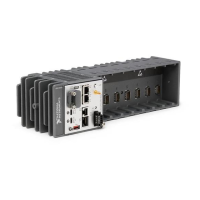
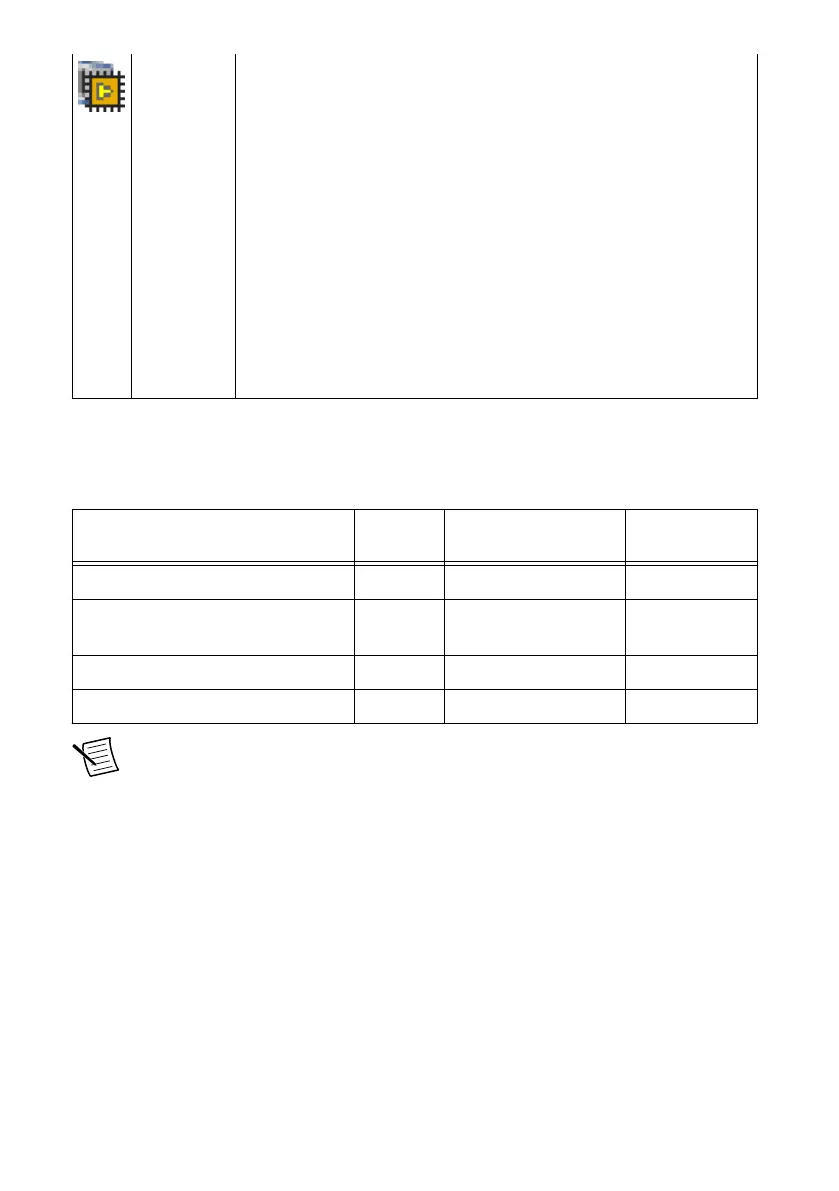